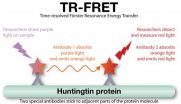Report: Cancer now leading cause of death in US hispanics
Tailored interventions to increase access is key to reducing cancer burden
2012-09-17
(Press-News.org) ATLANTA –September 17, 2012– A new report from American Cancer Society researchers finds that despite declining death rates, cancer has surpassed heart disease as the leading cause of death among Hispanics in the U.S. In 2009, the most recent year for which actual data are available, 29,935 people of Hispanic origin in the U.S. died of cancer, compared to 29,611 deaths from heart disease. Among non-Hispanic whites and African Americans, heart disease remains the number one cause of death.
The figures come from Cancer Statistics for Hispanics/Latinos 2012-2014, appearing in the journal CA: A Cancer Journal for Clinicians, and its companion publication, Cancer Facts & Figures for Hispanics/Latinos, 2012-2014, which has been produced every three years since 2000. Hispanics/Latinos are the largest and fastest growing major demographic group in the United States, accounting for 16.3% (50.5 million out of 310 million) of the U.S. population in 2010.
The report says that in 2012, an estimated 112,800 new cases of cancer will be diagnosed and 33,200 cancer deaths will occur among Hispanics. Among U.S. Hispanics during the past ten years of available data (2000-2009), cancer incidence rates declined by 1.7% per year among men and 0.3% per year among women. That compares to declines of 1.0% and 0.2% among non-Hispanic men and women, respectively. Cancer death rates among Hispanics declined by 2.3% per year in men and 1.4% per year in women during that same time period, compared with annual declines of 1.5% and 1.3% among non-Hispanic white men and women, respectively.
Hispanics have lower incidence and death rates than non-Hispanic whites for all cancers combined and for the four most common cancers (breast, prostate, lung and bronchus, and colorectum). The most notable example is lung cancer, for which rates among Hispanics are about one-half those of non-Hispanic whites. The risk of lung cancer is lower among Hispanics because they have historically been less likely to smoke cigarettes than non-Hispanic whites.
In contrast, Hispanics have higher incidence and mortality rates for cancers of the stomach, liver, uterine cervix, and gallbladder, reflecting greater exposure to cancer-causing infectious agents, lower rates of screening for cervical cancer, and possibly genetic factors. Incidence and death rates for cervical cancer are 50% to 70% higher in Hispanic women compared to non-Hispanic whites. In addition, Hispanics are diagnosed at an advanced stage of disease more often than non-Hispanic whites for most cancer sites.
Much of the difference in the cancer burden among U.S. Hispanics results from their unique profile in terms of age distribution, socioeconomic status, and immigration history. Just one in ten U.S. Hispanics is 55 years or older, the age group among whom the majority of cancers are diagnosed, compared with almost one in three non-Hispanics. In 2010, more than one in four (26.6%) Hispanics lived in poverty and nearly one in three (30.7%) was uninsured, compared with 9.9% and 11.7%, respectively, of non-Hispanic whites.
Hispanics in the U.S. are an extremely diverse group because they originate from many different countries (e.g., Mexico, Central and South America, and Cuba). As a result, cancer patterns among Hispanic subpopulations vary substantially. For example, in Florida the cancer death rate among Cuban men is double that of Mexican men. While there is limited data on cancer occurrence by subpopulation, Cancer Facts & Figures for Hispanics, as well as a second companion article published in CA (Cancer-related Risk Factors and Preventive Measures in US Hispanics/Latinos), provide prevalence data on major cancer-related risk factors and early detection testing within the Hispanic population by country of origin. For example, Cuban men are much more likely to smoke than Dominican men (21 percent versus 6 percent, respectively) and obesity prevalence among Mexican and Puerto Rican men is double that among Dominican men.
There are also differences between Hispanic subgroups in screening utilization; Mexican women are less likely to have had a recent mammogram than Dominican women (62 percent versus 78 percent, respectively).
Strategies for reducing cancer risk among Hispanics include increasing utilization of screening and available vaccines, as well as implementing effective interventions to reduce tobacco use, obesity, and alcohol consumption. "There is substantial heterogeneity within the US Hispanic population. The most effective strategies for reducing the cancer burden in these underserved communities utilize tailored, culturally appropriate interventions, such as patient navigation, to increase access to medical services." said Rebecca Siegel, MPH, lead author of the report.
INFORMATION:
Articles:
Cancer Statistics for Hispanics/Latinos 2012, CA Cancer J Clin 2012;62:283-298
Cancer-related Risk Factors and Preventive Measures in US Hispanics/Latinos, CA Cancer J Clin 2012; published online ahead of print Sept 17, 2012 (doi:10.3322/caac.21155)
END
ELSE PRESS RELEASES FROM THIS DATE:
2012-09-17
HEIDELBERG, 17 September 2012 – A natural product secreted by a soil bacterium shows promise as a new drug to treat tuberculosis report scientists in a new study published in EMBO Molecular Medicine. A team of scientists working in Switzerland has shown how pyridomycin, a natural antibiotic produced by the bacterium Dactylosporangium fulvum, works. This promising drug candidate is active against many of the drug-resistant types of the tuberculosis bacterium that no longer respond to treatment with the front-line drug isoniazid.
"Nature and evolution have equipped some ...
2012-09-17
The NAVVIS positioning system is primarily based on visual information. The TUM researchers had to develop a special location recognition system for this project. They started by taking photos of a building, simultaneously mapping prominent features like stairs and signs. A smartphone app then lets users view the map images to find their current location. All they have to do is take a photo of their surroundings. The program then compares the photo with the images stored in its database and works out the user's exact position (down to the nearest meter) and the direction ...
2012-09-17
Lugano, Switzerland, 14 September 2012 -- Ahead of the top 48 abstracts (LBA and PR suffix) that will be released during the ESMO 2012 Congress, over 1,600 abstracts will be published online on Monday, 17 September 2012 at 9:00 (CEST) to anticipate the flavor of an ESMO Congress that once again "will be presenting emerging strategies set to combat cancer, signposting future directions in patient treatment and care, boldly addressing the many new challenges that lie ahead." (Josep Tabernero, ESMO 2012 Scientific Chair)
http://www.esmo.org/events/vienna-2012-congress/program.html
--> ...
2012-09-17
When new cell phones or tablets enter the marketplace, yesterday's hot technology can quickly become obsolete - for some consumers. For others, the device still has value as an affordable alternative, or even as spare parts.
With support from the National Science Foundation (NSF), ecoATM of San Diego, Calif., has developed a unique, automated system that lets consumers trade in those devices for reimbursement or recycling.
Using sophisticated artificial intelligence (AI) developed through two NSF Small Business Innovation Research (SBIR) grants, ecoATM kiosks can ...
2012-09-17
A new light-based technique for measuring levels of the toxic protein that causes Huntington's disease (HD) has been used to demonstrate that the protein builds up gradually in blood cells. Published today (17th) in the Journal of Clinical Investigation, the findings shed light on how the protein causes damage in the brain, and could be useful for monitoring the progression of HD, or testing new drugs aimed at suppressing production of the harmful protein.
HD is a fatal, incurable, genetic neurological disease that usually develops in adulthood and causes abnormal involuntary ...
2012-09-17
[GLENVIEW, Ill., Sept. 17, 2012] – Mead Johnson Nutrition (NYSE: MJN) announced today results of a new study published in Pediatrics that shows Enfamil Human Milk Fortifier Acidified Liquid supports significantly higher growth in premature infants than powdered fortifiers and is well-tolerated. Enfamil Human Milk Fortifier Acidified Liquid is the first and only ultra-concentrated liquid human milk fortifier marketed in the United States that meets safety guidelines from the Academy of Nutrition and Dietetics (AND) and Centers for Disease Control and Prevention (CDC), as ...
2012-09-17
Sweet sorghum is primarily grown in the United States as a source of sugar for syrup and molasses. But the sturdy grass has other attributes that could make it uniquely suited to production as a bioenergy crop, U.S. Department of Agriculture (USDA) studies suggest.
Sorghum is an ideal candidate because of its drought tolerance, adaptability to diverse growing conditions, low nitrogen fertilizer requirements, and high biomass (plant material) content, according to molecular biologist Scott Sattler and collaborator Jeff Pedersen with USDA's Agricultural Research Service ...
2012-09-17
Uncertainties relating to the assessment of effectiveness of emission reduction measures are considerable. In order to manage these, there is an evident need to develop uniform assessment methods for ensuring that the assumed emission reductions are also achieved in practice.
Significant mitigation of climate change is widely supported globally. Achieving the mitigation targets will require considerable reductions in global greenhouse gas emissions in the coming years. However, widely differing views, particularly of the large economies such as the EU, the United States, ...
2012-09-17
Co-streams from the food industry are excellent sources of proteins and healthy oils for use in foods and cosmetics. However, at the moment these side streams are mainly used as fish and animal feed, for energy, or end up as waste.
Coordinated by VTT, the APROPOS (Added value from high protein and high oil containing industrial co-streams) project seeks to enrich several co-stream components at once from food quality co-streams of rapeseed/canola/mustard and fish. In particular, this project aims to promote the competitiveness of the SME sector and developing regional ...
2012-09-17
Alzheimer's disease (AD) is a growing challenge to the health care systems and economies of developed countries with millions of patients suffering from this disease and increasing numbers of new cases diagnosed annually with the increasing ageing of populations.
Early detection of prodromal AD is vital both for assessing the efficacy of potential AD therapeutic agents as well as new disease modifying therapies are most likely to be effective when initiated during the early stages of disease. The elucidation of early metabolic pathways associated with progression to Alzheimer's ...
LAST 30 PRESS RELEASES:
[Press-News.org] Report: Cancer now leading cause of death in US hispanics
Tailored interventions to increase access is key to reducing cancer burden


